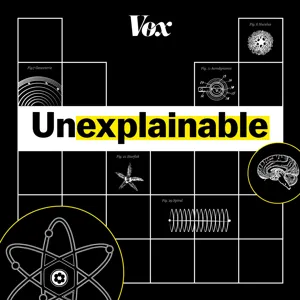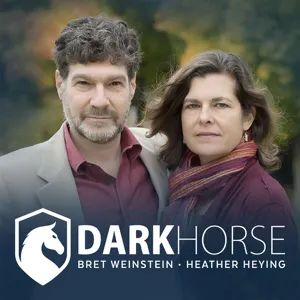Podcast Summary
The anus: A game-changer in animal evolution: The anus enabled animals to extract more nutrients from their food, leading to longer digestive tracts and larger, more diverse bodies. Businesses can learn to strive for simplicity and efficiency to perform at their best and unlock their full potential.
The development of the anus in animal evolution was a game-changer, enabling animals to extract more nutrients from their food and leading to the diversity of animal forms we see today. This simple bodily feature allowed animals to consume multiple meals without the need for disposal in between, leading to longer and more complex digestive tracts and ultimately, larger and more diverse bodies. This discovery, as described in a recent article by Katie Wu, transformed the way animals lived and moved, enabling them to extract more nutrients and burn more energy. This simple yet significant development in animal evolution is a reminder that even the smallest features can have a profound impact on the course of life on Earth. For businesses, the takeaway is to strive for simplicity and efficiency, just as the anus allowed animals to get more out of their food. By focusing on the basics and ensuring that every part of a business is in sync, companies can perform at their best and unlock their full potential.
The Anus in Animals: A Complex and Fascinating Evolutionary Puzzle: The anus in animals is a complex and fascinating topic, with the sea cucumber's anus serving multiple functions and the origin and number of times it evolved remaining a mystery due to limited fossil evidence and soft tissue nature.
The evolution of the anus in animals is a complex and fascinating topic that has intrigued scientists for decades. While there is no definitive answer as to how many times the anus evolved or what its exact origins are, there are numerous interesting discoveries and theories. For example, the sea cucumber's anus is a marvel of nature, serving not only as an exit point for waste but also as a second mouth, a breathing apparatus, and a defense mechanism. However, the lack of fossil evidence and the soft tissue nature of the anus make it a difficult topic to study. The biggest mystery remains the true origin of the anus, with theories suggesting it may have developed from a single hole that evolved into a mouth and anus at the same time. While this theory is compelling, it does have its challenges, making the study of anus evolution an ongoing and intriguing scientific pursuit.
Theories on the origin of anuses in animals: Two main theories propose the mouth and anus evolved separately, possibly from different points in evolutionary time, or that anuses evolved through the elongation and tunneling of a sac-like organism.
The evolution of anuses in animals is a complex and intriguing topic with multiple theories. The first theory suggests that the mouth and anus evolved from the same original hole, but different genes are expressed around each hole in many animals, indicating they may have appeared at different points in evolutionary time. The second theory proposes that anuses evolved through the elongation and tunneling of a sac-like organism, essentially creating a second hole. Both theories may be true, but determining which one was the origin of our anus is challenging. There is evidence that some animals, such as certain worms, can form multiple anuses, suggesting the possibility of anuses evolving multiple times. Comparative studies between species with seemingly unchanged body plans may provide clues to the origin of our anus. Ultimately, the answer may lie in ongoing research and discoveries in the field of evolutionary biology.
Exploring the History and Significance of the Human Anus and Butt: The human anus, though simple, is unique in the animal kingdom for its primary function of elimination. The study of butts can offer insights into various fields such as science, culture, and history.
While we may never fully understand the origins of the human anus due to the vast expanse of time involved, we can still appreciate the unique features of our own species. Across the animal kingdom, anuses have varied histories, but human anuses, which are relatively simple and serve primarily for elimination, stand out for their lack of complexity. However, the human butt, which is a more distinct feature, is a fascinating aspect of human anatomy that sets us apart from other animals. The study of butts can provide insights into science, culture, histories of race and gender, and more. So, while we may not be able to pinpoint the exact origin of the human anus, we can continue to explore and appreciate the many facets of this intriguing topic. And who knows, we may uncover some surprising discoveries along the way.
Butt's role in human evolution for running and brain development: The human butt's muscles and bone structure evolved for long-distance running, contributing to brain development through increased calorie intake. The fatty part of the butt may provide a convenient location for energy storage due to our center of gravity.
The human butt is a unique combination of muscle, bone, and fat, with the muscle and bone adaptation well-studied due to their fossilizable nature. The muscles in the butt are the largest in the body and played a crucial role in human evolution as an adaptation for long-distance running, allowing us to obtain more calories for the development of a larger brain. However, the fatty part of the butt is less understood due to the lack of a fossil record for soft tissues like fat. Despite this, humans have one of the highest percentages of body fat due to the energy requirements of our large brains. The fat storage in the butt may be a convenient location due to our center of gravity being around our waist.
The complex influence of evolution and culture on the preference for a larger butt: The preference for a larger butt is influenced by both biological and cultural factors, with theories suggesting advantages for attracting mates and psychological adaptation, but also heavily influenced by cultural norms and subject to change over time.
The preference for a larger butt is a complex phenomenon influenced by both evolutionary biology and cultural norms. While some theories suggest that a larger butt may have been advantageous for women in terms of attracting high-quality mates and for men in terms of psychological adaptation, others argue that these preferences are heavily influenced by cultural factors and have changed significantly over time. Furthermore, the history of scientific study of the human body, particularly in relation to race, has been marred by misuse and misappropriation of science to reinforce harmful stereotypes and prejudices. Ultimately, the study of the human body and its various features, including the butt, reveals the importance of considering both biological and cultural factors and the potential for science to be used in both productive and harmful ways.
Understanding the cultural significance of butts: Exploring the human body's unique features requires both scientific inquiry and an understanding of the social and cultural meanings we attach to those features.
The question of why butts look the way they do is not just a question of science or evolutionary biology, but also deeply intertwined with social, historical, and cultural factors related to race and gender. While we have a good understanding of the biological functions of the large butt muscle and the importance of fat storage in the human body, the last 1% of understanding the cultural significance of butts requires careful consideration of the complex social realities and historical constructions surrounding the perception of bodies. This perspective offers an interesting lens through which to explore the human experience and challenges us to consider the ways in which our understanding of science is shaped by our cultural context. Ultimately, the study of the human body and its unique features involves not only scientific inquiry but also an understanding of the social and cultural meanings we attach to those features.






